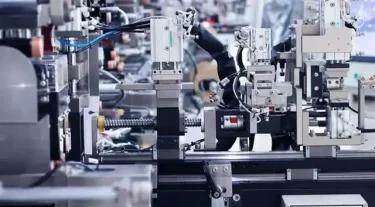
。
# Tape Production Process and Techniques
## Introduction to Tape Manufacturing
Tape manufacturing is a complex process that involves multiple stages to create various types of adhesive tapes for different applications. From everyday household uses to industrial applications, tapes play a crucial role in our lives. The production process requires precision, quality control, and specialized techniques to ensure the final product meets specific performance standards.
## Raw Materials in Tape Production
The foundation of tape manufacturing begins with selecting the right raw materials. The primary components include:
– Backing material (plastic films, paper, cloth, or foil)
– Adhesive (rubber-based, acrylic, or silicone)
– Release liners (for certain tape types)
– Additives (to enhance specific properties)
## The Tape Manufacturing Process
### 1. Backing Material Preparation
The first step involves preparing the backing material, which serves as the base for the tape. This may include:
– Extruding plastic films
– Treating paper or fabric backings
– Applying coatings for special properties
### 2. Adhesive Application
The prepared backing material then receives the adhesive coating through one of several methods:
– Direct coating (knife-over-roll, reverse roll)
– Transfer coating
– Hot melt application
– Solvent-based application
### 3. Drying and Curing
After adhesive application, the tape goes through drying ovens or curing chambers to:
– Remove solvents (if used)
– Achieve proper cross-linking of adhesives
– Develop final adhesive properties
### 4. Lamination (if required)
Some tape products require additional layers:
– Release liners for pressure-sensitive tapes
– Protective coatings
– Printed layers for branding or identification
### 5. Slitting and Rewinding
The final manufacturing stage involves:
– Precision slitting to desired widths
– Rewinding onto cores
– Quality inspection
– Packaging preparation
## Specialized Tape Production Techniques
### Pressure-Sensitive Tape Manufacturing
This common tape type requires:
– Controlled tack and peel strength
– Proper release characteristics
– Consistent adhesive distribution
### Double-Sided Tape Production
Creating double-sided tapes involves:
– Applying adhesive to both sides of a carrier material
– Using release liners for protection
– Ensuring balanced adhesive properties
### Specialty Tape Techniques
Advanced manufacturing methods include:
– Foam tape production
– Conductive tape manufacturing
– High-temperature resistant tapes
– Medical-grade adhesive tapes
## Quality Control in Tape Manufacturing
Maintaining consistent quality involves:
– Adhesion testing (peel, tack, and shear)
– Thickness measurements
– Visual inspections
– Performance testing under various conditions
– Environmental resistance testing
## Environmental Considerations
Modern tape production focuses on:
– Reducing solvent use
– Developing water-based adhesives
– Implementing recycling programs
– Energy-efficient manufacturing processes
– Sustainable material sourcing
## Future Trends in Tape Manufacturing
The industry continues to evolve with:
– Smart adhesive technologies
– Biodegradable tape options
– Nanotechnology applications
– Improved recycling capabilities
– Automated production systems
## Conclusion
Tape manufacturing combines material science, precision engineering, and quality control to produce versatile products that serve countless applications. As technology advances, tape production processes continue to improve, offering better performance, environmental sustainability, and specialized solutions for various industries.
Keyword: tape manufacturing
0 thoughts on “Tape Production Process and Techniques”